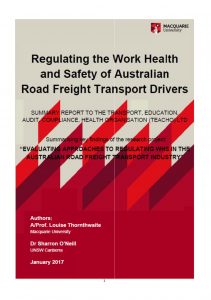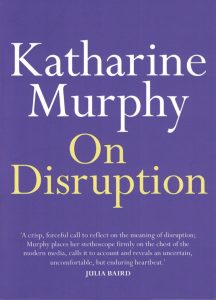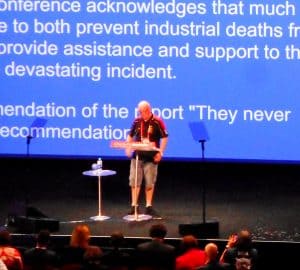Applying the most effective way to have companies comply with their occupational health and safety (OHS) obligations has been debated in Australia and elsewhere for years. The issue will arise again in 2019 and in relation Industrial Manslaughter laws as Australian States have elections, or the political climate suits.

There are several elements to the argument put by those in favour of Industrial Manslaughter laws. Workers are still being killed so the deterrence of existing OHS laws has seen to have failed. Deterrence has been based on financial penalties and workers are still being killed so financial penalties have failed. Jail time is the only option left.
This is a simplistic depiction of the argument, but it is not dissimilar to some of the public arguments. The reality is that deterrence is achieved in two ways – telling the person of the consequences of an action and enforcing those consequences.

 The strong readership of the article on truck driver safety based on the
The strong readership of the article on truck driver safety based on the 

 The trade union movement was instrumental in showing that workplace bullying was a pervasive problem in Australian workplaces. Many Codes of Practice and guidances for workplace bullying and occupational violence were written shortly after the action by the Australian Council of Trade Unions almost two decades ago. But, for some reason, although sexual harassment was mentioned in those early documents, it never received the attention in occupational health and safety (OHS) circles that, in hindsight, it should have.
The trade union movement was instrumental in showing that workplace bullying was a pervasive problem in Australian workplaces. Many Codes of Practice and guidances for workplace bullying and occupational violence were written shortly after the action by the Australian Council of Trade Unions almost two decades ago. But, for some reason, although sexual harassment was mentioned in those early documents, it never received the attention in occupational health and safety (OHS) circles that, in hindsight, it should have.
 Occupational health and safety (OHS) is often about promises. Employees trust their bosses to provide them with a job and the employer promises to provide a workplace that is as safe as possible. There are also contractual policies which formalise OHS relationships between client and contractor. But OHS is more often about those more personal promises and expectations between the boss and the worker.
Occupational health and safety (OHS) is often about promises. Employees trust their bosses to provide them with a job and the employer promises to provide a workplace that is as safe as possible. There are also contractual policies which formalise OHS relationships between client and contractor. But OHS is more often about those more personal promises and expectations between the boss and the worker.